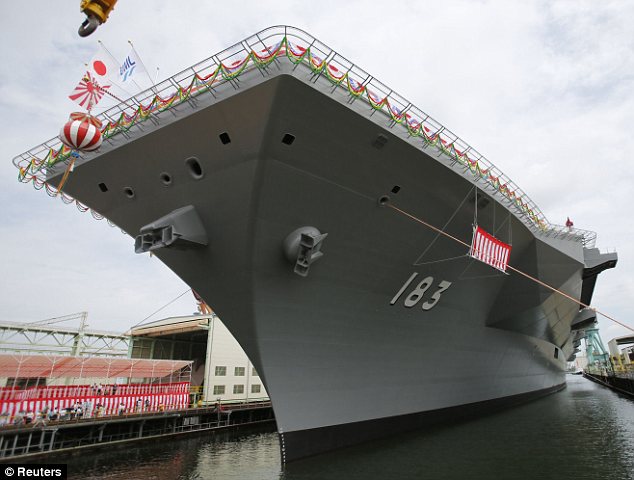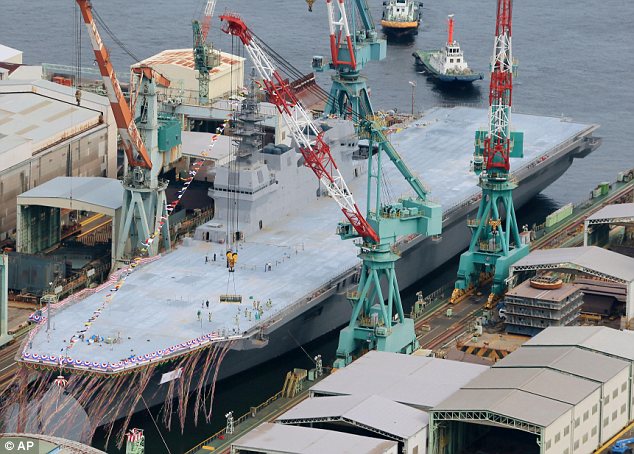Hugo Gye and Anthony Bond
Daily Mail
August 8, 2013
- Japan launches 250m destroyer Izumo which it says will be used for defence
- Critics claim the large flat-topped ship can function as aircraft carrier
- Country is banned from warfare thanks to post-WW2 pacifist constitution
- But prime minister is keen to strike a more aggressive stance against China
Japan has been accused of ignoring its policy of self-defence after launching its largest warship since the end of the Second World War as the government faces down China over a disputed chain of islands.
The new ship is designed to carry up to 14 helicopters at once – but Japanese officials insist it is not an aircraft carrier and will not be used to launch military jets.
The 250m vessel, named ‘Izumo’, is officially labelled a destroyer, although it has a flat top which functions as a flight deck like that on an aircraft carrier.
The country is officially banned from all military actions apart from self-defence and humanitarian aid under the terms of the constitution imposed on it by the U.S. after the Second World War.


Its ‘Peace Constitution’ , which was designed by Allied leaders, followed Japan’s involvement in the Second World War which included the devastating attack on US naval base Pearl Harbour in 1941.
This eventually led to the U.S. dropping a nuclear bomb on Hiroshima in 1945, which brought about Japan’s surrender and the end of the war in 1945.
Officials say the new ship will be used to defend Japan and deliver personnel and supplies to areas hit by natural disasters, such as the devastating 2011 earthquake.
Japan’s conservative prime minister Shinzo Abe is keen to change the constitution to allow the country to maintain a standing army for the first time in seven decades.
The unveiling of the new destroyer – which has been under development since 2009 – also coincides with a dispute between Japan and China over a chain of tiny islands in the South China Sea.
The two countries conduct regular patrols of the waters around the islands, which are called the Senkakus in Japan and the Diaoyus in China.


